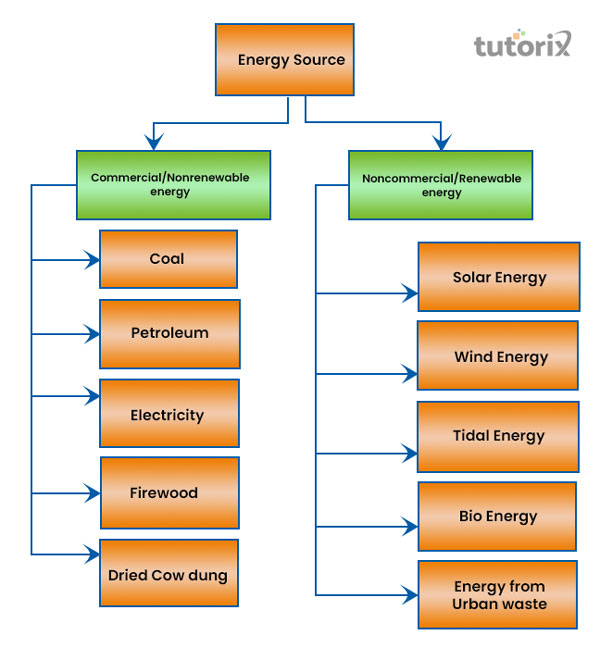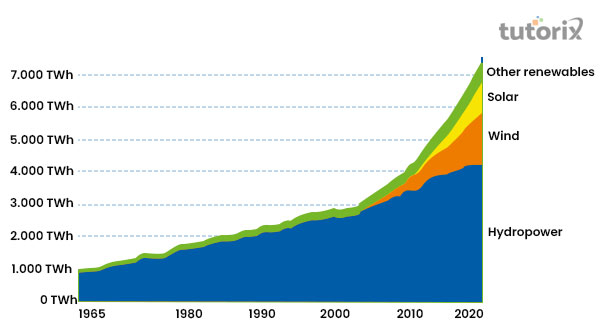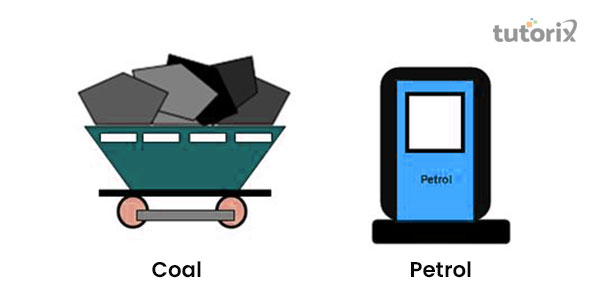Introduction
Various types of energy sources are there that can be divided into different parts. The sun is not only the source of energy. Geothermal energy, nuclear energy, biomass, wind energy, and petrol are some of the other important sources from which energy can be extracted. Based on the characteristic of sustainability, energy is classified into two main types of energy sources. Energy can be extracted from both renewable and non-renewable sources. Conventional and non-conventional sources of energy are two other types of energy sources that play an important role in the consumption and usage of energy.
Classification of Energy
Energy can be classified as the core ability to do any work. The ability of a particular system to perform any task is regarded as energy. Energy is such a property, present in an object that can be transferred into various objects (Leung et al. 2020).
Energy can also be converted into different forms. Another example of chemical energy is a candle in which the energy is stored as a form of chemical energy and it has to be burnt to extract this energy (Golubev et al. 2021).
Burning is such a process with which any kind of chemical energy can be converted into heat energy.
Renewable and non-renewable sources of energy
The two most important sources of energy are renewable and non-renewable energy. Natural resources of energy such as geothermal, solar, wind, tidal, hydropower, and biomass energies are renewable energies that are sustainable in nature (Babenko et al. 2019). These energy sources are safe for the environment.

Figure 1: Energy Sources
Non-renewable sources of energy are limited in supply. This type of source of energy is mainly based on earth and possesses a limitation with which it can be finished (Afrah et al. 2019). Natural gas, hydrocarbon gas liquids, petroleum, coal, and nuclear energy are some important examples of non-renewable energy.

Figure 2: Generation of renewable energy globally
In recent times, the global usage of renewable energy has increased very much. Wind power and hydropower consumption and generation have also increased from before.
Explore our latest online courses and learn new skills at your own pace. Enroll and become a certified expert to boost your career.
Difference between renewable and non-renewable sources of energy
| Renewable energy sources | Non-renewable energy sources |
|---|---|
| These energy resources are not impacted by any human activity | Human activities, directly impact non-renewable energy sources |
| These sources can be replaced and renewed. | Once consumed, these sources cannot be renewed. |
| Sources are inexhaustible in nature | These sources are exhaustible in nature. |
Table 1: Difference between renewable and non-renewable sources
Other types of sources of energy
| Name of the energy source | Advantages | Disadvantages |
|---|---|---|
| Wave energy | Less damage to the land, widely available and abundant | Suitable for a certain location, visual pollution and noise, dependent on the length of wave that can differ from time to time |
| Solar energy | Enhahcne technological development, reduce maintenance costs and electricity bill | Dependent on weather, spacious, expensive |
| Tidal energy | Predictable, longevity and continuous supply | High cost in construction and negative impacts of EMF emission |
| Wind energy | Cost-effective and environment-friendly | Threat to wildlife and aesthetic pollution |
| Nuclear power energy | Lessen emission of greenhouse gases and less expensive | High-risk pollutant for water and harmful for animal lives and trees |
| Biomass energy | A great revenue source for manufacturers, carbon-neutral | High chances of deforestation |
| Hydrogen energy | Reduces harmful emissions and fuel-efficient | Storage difficulty, high flammable and expensive |
| Geothermal energy | Highly efficient and easy maintenance | Lack of sustainability and high investment cost |
| Hydroelectric energy | Adjustable and reliable with emission-free | High risk of flood with high initial cost and high emission of methane and carbon |
Table 2: Different sources of energy with advantages and disadvantages
Two types of natural sources of energy
As time moves forward, the natural sources of energy have been changed accordingly. Good sources of energy may consist of some significant characteristics among which easy transportation, high economic value, and less polluting attributes are important (Malav et al. 2020). Natural sources of energy are divided into two types, conventional and non-conventional energy sources. Conventional energy sources are being used for a long time and these are well-known and introduced sources of energy (Ranjith & Naik, 2018). Non-conventional sources of energy are introduced just a few years back and are developing day by day. Petroleum, coal, and natural gas are examples of conventional sources. Biogas, solar and geothermal are examples of non-conventional energy sources.

Figure 3: Conventional source of energy
Difference between conventional and non-conventional sources of energy
| Conventional energy source | Non-conventional energy source |
|---|---|
| Exhaustible in nature | Non-exhaustible in nature |
| Expensive for proper maintenance and transmission | Less expensive and easy to maintain |
| Prone to pollution | Pollution-free and environment-friendly |
Leave a Reply